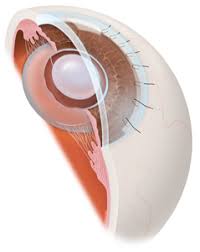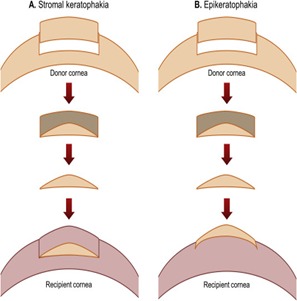Introduction:
Extrascapular cataract extraction (ECCE) is a type of eye surgery in which the lens of the eyes are removed, leaving the elastic capsule covering the lens which is left partially attached to allow the implantation of an intraocular lens (IOL). This procedure requires a much smaller incision than the older process called Intracapsular Cataract. Although it helped to establish modern cataract surgery, extrascapular cataract extraction (ECCE) is still used as a backup plan when intraoperative success with phacoemulsification or small-incision cataract surgery (SICS) appears unlikely.
Procedure:
In this procedure, the surgeon makes a tiny incision in the white of the eye near the outer edges of the cornea. The size of this depends on whether the lens of the nucleus is to be removed all in one piece or whether it will be dissolved into tiny pieces and then vacuumed out. The surgeon then enters the eye through this incision and carefully opens the front of the capsule that holds the lens in place. After the nucleus or hard center is removed, you may need sutures if your cataract was removed in
one piece. If the phacoemulsification technique is employed, sutures are usually not required to
close the incision.
Surgical techniques of ECCE:
There are several surgical techniques available for extrascapular cataract extraction (ECCE).The most common methods are as follows:
The limbal or clear corneal incision is made at the edge of the cornea, just beyond the iris. This type of incision heals very well and has a low risk of infection. In this technique, an instrument called an irrigating chopper is used to make a circular cut around the lens. The front part of the lens is then removed with forceps, and the back part is broken up and suctioned out.
The scleral incision is made in the white of the eye and extends from just behind the iris to about halfway around the eyeball. This type of incision takes longer to heal than a limbal incision, but it has the advantage of being less likely to cause astigmatism. In this technique, an instrument called a vitrector is used to make three radial cuts around the lens. The front part of the lens is then removed with forceps and the back part is suctioned out.
The iridectomy is a small incision made in the iris, which is the colored part of the eye.
This type of incision has a very low risk of infection and heals quickly. In this technique, an instrument called an intraocular lens implantation forceps is used to remove the front part of the lens. The back part of the lens is then suctioned out.
The pars plana incision is made through the pars plana, which is the part of the eye between the iris and the lens. This type of incision has a very low risk of infection and heals quickly. In this technique, an instrument called a vitrector is used to make two radial cuts around the lens.
Conclusion:
ECCE remains an excellent operation for the majority of cataracts. It is associated with a low incidence of complications and a high degree of patient satisfaction. With the advent of new
technologies, such as phacoemulsification and intraocular lens implants, the number of ECCE procedures performed has decreased; however, this does not mean that it is no longer a valuable option for treating cataracts In certain cases, such as when the cataract is very hard or there is significant zonular instability, ECCE is the best choice. For these reasons, it is important for surgeons to be familiar with this technique and to be able to perform it when necessary.








